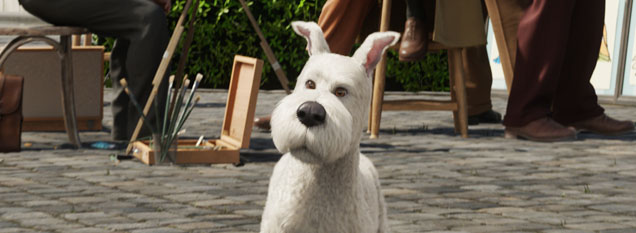Director Steven Spielberg used innovative motion capture technology to lift the boy reporter off the printed page and onto the screen
The Adventures Of Tintin is based on the plots of three Tintin books – The Crab With The Golden Claws, The Secret Of The Unicorn and Red Rackham’s Treasure. Tintin’s Belgian creator Hergé drew an entire world from which Steven Spielberg and his filmmakers have taken images – a face in a crowd from one story, a car from another, a blue tin jug or a wooden artefact from the third.
Behind the digital animation are Tintin co-Producer Peter Jackson’s New Zealand-based Weta Workshop and Weta Digital, with blockbusters Avatar and King Kong among their credits.
Stage one of the Tintin project was the creation of some 2,500 conceptual paintings by a team of eight artists with a brief to translate Hergé’s drawings into the three-dimensional world. Every image was considered by Spielberg or Jackson who selected the ones they wanted developed.
A pre-visualisation team mapped out the film’s complex action sequences in relatively crude 3D animations. While some were simple re-workings of Hergé frames – experiments in mood and lighting – others were experimental renditions of an environment such as Tintin’s apartment, adding the kind of clutter and detail missing from Hergé’s minimalistic frames.
SPARKLING DOTS
Transforming these digital visual concepts into digital animation meant the real actors – Jamie Bell as Tintin and Andy Serkis as Captain Haddock – played their roles in a motion capture – mocap – studio. They had to squeeze into bodysuits covered in sparkling dots so all their movements could be digitally captured as they acted out the sequences.
The final stages of the facial and bodily actions of the actors were rendered via massive computer processing power into moving people, and teams of computer artists tweaked and fine-tuned the images into the finished movie.
It’s not all about the actors however. Hergé’s colour palette has been exhaustively analysed. He always coloured the sea green, so the same tint is used in the movie, albeit overlaid with digitally rendered shadows and highlight.
Great care had to be taken, too, with body shapes. Hergé drew characters with distinctively skinny legs, big heads and chunky, short bodies. Those dimensions have been preserved in the movie.
Finding a canine actor to play Snowy, Tintin’s dog, proved impossible and the digital animal was completely computer-generated.







